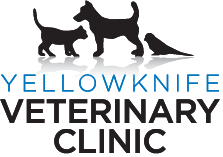Library
-
Bites wounds are one of the most common reasons dogs are seen for emergency appointments with their veterinarians. The dog's teeth and jaws are very powerful and the wounds they inflict can crush or tear muscles and skin, penetrate through the chest wall and cause lung collapse, or cause serious or fatal damage to intestinal organs. All bite wounds are considered to be contaminated and/or infected. Left untreated, the bacteria in an infected bite wound will cause a localized abscess or more generalized cellulitis that spreads through the surrounding area. All bite wounds should be treated by a veterinarian as soon as possible. Treatment will depend on the extent of the injuries, your dog's general health, and the location of the wounds.
-
Some behaviors natural to birds can be problematic for their owners, who often inadvertently reinforce them. The first step is understanding the cause behind your bird's biting or screaming. If your bird is otherwise healthy and his environmental needs are met, positive reinforcement training is the most effective method for managing undesirable behaviors.
-
Green and black tea is given by mouth, over the counter, and is used off label to treat cancers and inflammation. Give as directed by your veterinarian. The most common side effects of caffeinated green/black tea include nervousness, sleeplessness, increased heart rate, and anxiety. Based on human studies, green and black tea should be used cautiously in pets that have kidney disease, stomach or intestinal ulcers, heart disease, insomnia, glaucoma, or high blood pressure. If a negative reaction occurs, please call your veterinary office.
-
Rabbits and guinea pigs commonly present symptoms related to the urinary system. At home, the owner may notice urine collecting in the hair on the inside of the rear legs, a more pungent smell to the urine, the pet straining to urinate, or hematuria (bloody urine). After a proper physical exam and a thorough palpation of the urinary bladder, the veterinarian may identify bladder stones (a firm, oval hard mass in the bladder) or "bladder sludge" in rabbits (a bladder filled with a grainy, sand-like material). X-rays of the abdomen allow the veterinarian to identify the type of bladder disease and/or the number of stones.
-
Bladder stones are rock-like formations of minerals that develop in the urinary bladder. All stones form because of disease or inflammation in the bladder. The most common signs in cats are bloody urine and straining to urinate. X-rays (with or without contrast dyes) or ultrasound may be necessary for diagnosis. The fastest way to remove bladder stones is via a surgical procedure called a cystotomy. Special diets or passing a catheter may be successful for some bladder stones. Your veterinarian will advise you of the best course of action for your cat's situation.
-
Bladder stones are rock-like formations of minerals that develop in the urinary bladder. The most common signs in dogs are bloody urine and straining to urinate. Bladder stones can develop within a few weeks, or they may take months to form. Most are visible on X-rays or an ultrasonic bladder examination. There are three main treatment options for bladder stones: surgical removal, non-surgical removal by urohydropropulsion, or dietary dissolution. Prevention is possible in some cases, depending on the chemical composition of the stones.
-
Dogs appear to be more susceptible to blastomycosis than many other species. The blastomycosis fungus seems to target the respiratory tract, although it may spread throughout the entire body. Cytology and/or histopathology are required to diagnose blastomycosis conclusively. Itraconazole is the preferred drug of treatment for most dogs. Prognosis is good for many cases of blastomycosis infection with recovery rates between 50-75%.
-
Blepharitis (inflammation of the eyelid) can affect one or both eyes. The affected eyelid will usually be red, swollen, and itchy. Any condition that can cause irritation of the eyelids can lead to blepharitis. The numerous potential causes of this condition, along with the clinical signs, diagnosis, treatment, and prognosis are outlined in this handout.
-
Blepharitis (inflammation of the eyelid) can affect one or both eyes. The affected eyelid will usually be red, swollen, and itchy. Any condition that can cause irritation of the eyelids can lead to blepharitis. The numerous potential causes of this condition, along with the clinical signs, diagnosis, treatment, and prognosis are outlined in this handout.
-
Gastric Dilatation and Volvulus (GDV) is an acute life-threatening condition where the stomach fills with large amounts of air and then twists around effectively cutting off the outputs to the esophagus and intestine. It then continues to expand putting pressure on the mucosa, major vessels and diaphragm. Because of the constriction of major vessels returning to the heart, a dog will collapse from lack of oxygen and nutrients to vital organs. Underlying causes are still a mystery but most dogs affected are large breed, deep chested male dogs although any dog can experience GDV. There is a definite risk in dogs that have eaten large meals and then exercise. Bloat may be diagnosed by physical exam but radiographs and other testing is needed to show volvulus. Treatment involves decompressing the stomach with a stomach tube or a percutaneous catheter, shock treatment with IV fluids and emergency medications, surgery to correct the volvulus and identify and remove any necrotic areas of stomach or spleen. Mortality rate ranges from 15-40% in treated cases. There is no guaranteed prevention for GDV but gastropexy can reduce the risk. Attention to diet, feeding and exercise may also prevent gastric dilation.

